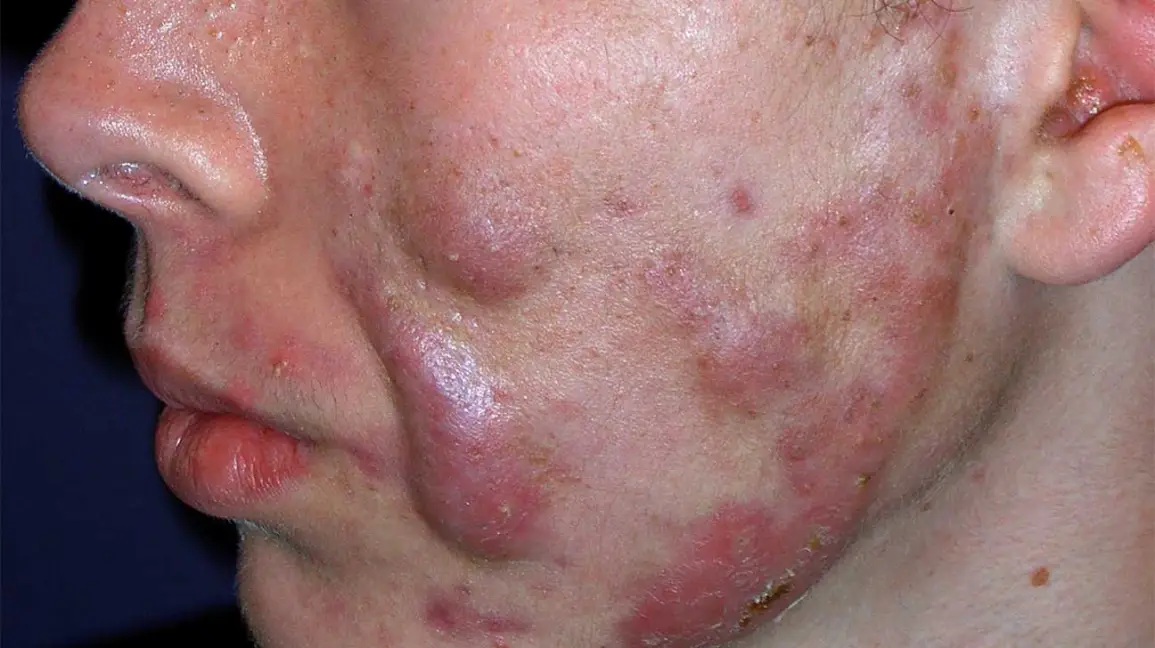
Acne Disease
Acne usually begins during puberty when hormones stimulate oil glands attached to hair follicles, leading them to produce more sebum than necessary and expand pores, leading to larger pores producing even more sebum production.
Excess sebum mixes with dead skin cells and bacteria to form open comedones that, once exposed to oxygen, darken to dark brown or black in color. Other acne blemishes include papules, pustules or cysts.
Causes
Acne is caused when overactive oil glands secrete too much oil, which combines with dead skin cells and bacteria in your pores to form whiteheads, blackheads or pimples that clog them up and lead to whiteheads, blackheads or pimples that become clogged, eventually becoming whiteheads, blackheads or pimples if left irritated resulting in red, squishy pores filled with pus (acne cysts) or scarring effects. While acne typically starts during puberty due to hormonal changes it can occur at any age – although teenaged acne cases tend to start more frequently due to hormonal changes than earlier years.
Things that may contribute to acne include skin products with pore-clogging sulfates, oils and chemicals; stress hormones which increase oil gland production; medications such as corticosteroids, androgens or lithium; diet high in simple and processed carbohydrates (high glycemic index); genetics. A gentle soap should help prevent acne. Adults can still get it occasionally though it tends to affect more often the face, chest shoulders back; severe cases even affect eyes mouth ears!
Symptoms
Acne occurs when pores become clogged with oil, dead skin cells and bacteria resulting in blemishes to appear primarily on the face and upper chest area. Acne vulgaris affects over 80% of people at some point during their lives and is the most prevalent chronic skin disease; more prevalent among teens but can affect anyone at any age.
Pimples are the primary symptoms of acne, but there are other types. Noninflammatory blemishes (closed and open comedones), flesh-colored or whitish in color, appear as small plugs not exposed to oxygen; this condition is commonly known as whiteheads. Whiteheads also are called comedonal. Papules, inflamed pink in color with tender spots may become inflamed when touched and tender when touched while pustules with yellowish or white pus topped by yellowish or white pus may become painful to touch; pustules also feature as pustules have yellowish or white pus topped by painful yellowish or white pustules while cysts cause severe pain redness and swelling when touching.
Diagnosis
Most people will experience acne at some point during their lives and can usually be diagnosed from a physical exam by healthcare providers. It’s essential to see a healthcare provider for an accurate diagnosis as different forms of acne require different forms of treatment.
Mild acne includes no more than 20 blackheads and whiteheads, no more than 15 inflamed papules and pustules, and no nodules. Moderate acne typically involves several to many comedones, papules and pustules with several nodules present; Cystic acne contains large numbers of deeply painful nodules; oral isotretinoin is currently approved to treat severe nodular acne cases.
Acne vulgaris (ACV) is a chronic skin condition characterized by noninflammatory and inflammatory lesions of pilosebaceous units (hair follicles connected with sebaceous glands), including comedones, papules, pustules and cysts in various locations on the face, chest or back; most common among teenagers but often persisting into adulthood and potentially leaving scarring in its wake. Most prevalent among teenagers ages 13-19; typically lasting three to five years before eventually subsiding. ACV can leave scarring behind and leave scars when left untreated – with long term lasting scarring leaving permanent scarring after infection has set in.
Treatment
Treatment for acne aims to both prevent new lesions from appearing and heal existing ones, typically using topical and oral agents that reduce sebum production, comedone formation, inflammation and abnormal keratinization.
Benzoyl peroxide is an inexpensive, effective, and well-tolerated treatment option for acne that effectively eliminates surface bacteria that aggravate the condition. Available in several concentrations and washes for optimal use, it may even be combined with retinoids for even greater benefits.
Retinoids have been used for over 30 years and are an effective therapy for mild-to-moderate acne. When applied daily to clean, dry skin, they tend to produce the greatest benefit; initially they may cause irritation such as itching, peeling and redness which should eventually subside after several days of continued therapy.
Moderate to severe acne can result in scarring and psychological trauma, so treating it early and effectively is paramount in order to avoiding long-term scarring and depression.


